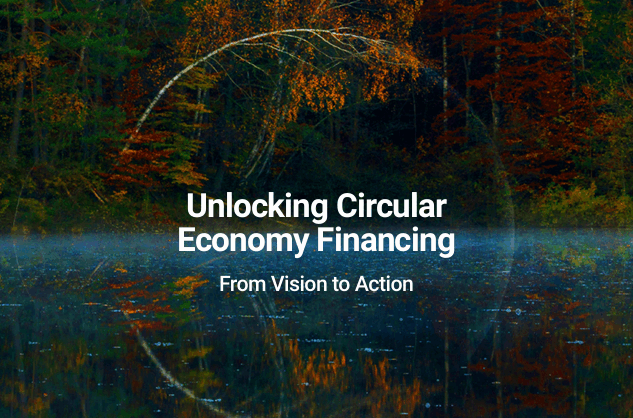Protix insect ingredients show reduced environmental impact in peer review – PetfoodIndustry

Report on the Environmental Performance of Insect-Based Ingredients and Alignment with Sustainable Development Goals
Executive Summary
A peer-reviewed Life Cycle Assessment (LCA) published in ScienceDirect provides empirical evidence that insect-based ingredients produced by Protix offer a significantly lower environmental footprint compared to conventional protein sources. This report analyzes these findings, with a significant emphasis on their direct contributions to the United Nations Sustainable Development Goals (SDGs), particularly those concerning climate action, responsible production, and the protection of terrestrial and aquatic ecosystems.
Life Cycle Assessment Findings
Overview of the Study
The assessment utilized primary, industrial-scale data from Protix’s commercial facility in Bergen op Zoom, Netherlands. It evaluated the environmental impact of three key products:
- ProteinX (premium insect meal)
- LipidX (premium insect fat)
- PureeX (fresh insect meat)
The results confirm that these ingredients advance sustainable production methods within the pet food and animal feed sectors.
Contribution to Sustainable Development Goals (SDGs)
SDG 12: Responsible Consumption and Production
The production of Protix ingredients exemplifies the principles of SDG 12 by creating a circular and resource-efficient system. The LCA demonstrates a substantial reduction in resource intensity compared to traditional feed components, thereby promoting sustainable production patterns.
- Water Use Reduction: PureeX fresh insect meat was found to use 99.8% less water than conventional poultry meat, directly addressing targets for efficient natural resource management.
- Land Use Reduction: LipidX premium insect fat demonstrated a near-100% reduction in land use compared to coconut oil, showcasing a method to decouple food production from land degradation.
SDG 13: Climate Action
The findings present a viable pathway for mitigating greenhouse gas emissions within the agricultural supply chain, a critical component of SDG 13. The comparative analysis of ProteinX insect meal highlights its climate benefits:
- A 78% reduction in CO2 emissions compared to poultry meal.
- An 89% reduction in CO2 emissions compared to soy protein concentrate.
- A 52.6% reduction in CO2 emissions compared to soy meal.
SDG 15: Life on Land & SDG 14: Life Below Water
The reduced environmental footprint of insect ingredients directly supports the conservation of terrestrial and marine ecosystems.
- Protecting Terrestrial Ecosystems (SDG 15): By minimizing land and water use, insect farming reduces pressure on forests and natural habitats often impacted by the cultivation of crops like soy.
- Conserving Marine Resources (SDG 14): ProteinX showed 20.4% lower CO2 emissions than fishmeal, offering a more sustainable alternative that can help alleviate pressure on wild fish stocks and marine biodiversity.
Conclusion and Future Outlook
The peer-reviewed LCA confirms that Protix’s insect-based ingredients are a sustainable alternative that aligns strongly with multiple SDGs. The documented reductions in emissions, land use, and water consumption position this technology as a key contributor to achieving a more sustainable global food system. Further environmental gains are anticipated, contingent on regulatory approval for the use of lower-grade feedstock, which would enhance the circularity and efficiency of the production process, further strengthening its contribution to SDG 12.
Analysis of Sustainable Development Goals in the Article
1. Which SDGs are addressed or connected to the issues highlighted in the article?
The article on Protix’s insect-based ingredients connects to several Sustainable Development Goals (SDGs) by highlighting a production method that significantly reduces environmental impact compared to conventional protein sources. The primary SDGs addressed are:
- SDG 12: Responsible Consumption and Production: The core of the article is about creating a more sustainable production pattern for animal feed ingredients. The life cycle assessment (LCA) directly evaluates the environmental footprint of production, focusing on the efficient use of natural resources.
- SDG 13: Climate Action: The article explicitly quantifies the reduction in CO2 emissions from using insect meal compared to traditional sources like poultry meal and soy protein concentrate, directly addressing climate change mitigation.
- SDG 15: Life on Land: The significant reduction in land use for insect-based ingredients compared to agricultural products like coconut oil and soy directly relates to protecting terrestrial ecosystems and halting land degradation often associated with conventional agriculture.
- SDG 14: Life Below Water: By offering a sustainable alternative to fishmeal, the production of insect protein helps reduce the pressure on marine ecosystems caused by overfishing to supply the animal feed industry.
- SDG 2: Zero Hunger: While less direct, the article contributes to this goal by promoting sustainable and resilient food production systems. Creating efficient animal feed from alternative sources like insects, which can be raised on “lower grade feedstock,” supports a more sustainable overall food system and circular economy principles.
2. What specific targets under those SDGs can be identified based on the article’s content?
Based on the information provided, several specific SDG targets can be identified:
- Target 12.2: By 2030, achieve the sustainable management and efficient use of natural resources.
- Explanation: The article’s focus on dramatically lower land and water use (e.g., “100% less land use compared to coconut oil” and “99.8% less water than poultry meat”) is a direct contribution to the more efficient use of natural resources.
- Target 12.4: By 2020, achieve the environmentally sound management of chemicals and all wastes throughout their life cycle… and significantly reduce their release to air, water and soil in order to minimize their adverse impacts on human health and the environment.
- Explanation: The quantified reduction in CO2 emissions (“reduces CO2 emissions by 78% compared to poultry meal”) demonstrates a significant reduction in the release of greenhouse gases to the air. The mention of potential use of “lower grade feedstock” also points towards sustainable waste management.
- Target 14.4: By 2020, effectively regulate harvesting and end overfishing…
- Explanation: The article presents ProteinX as an alternative to fishmeal. By reducing demand for fishmeal, which is a major driver of overfishing, this innovation helps alleviate pressure on marine fish stocks.
- Target 15.2: By 2020, promote the implementation of sustainable management of all types of forests, halt deforestation…
- Explanation: The article highlights that insect meal has an 89% lower CO2 footprint than soy protein concentrate. Since soy cultivation is a significant driver of deforestation, providing a more land-efficient alternative directly supports this target.
3. Are there any indicators mentioned or implied in the article that can be used to measure progress towards the identified targets?
Yes, the article is rich with specific, quantifiable data that serve as direct indicators for measuring progress towards environmental sustainability targets.
- Indicator for Climate Action (SDG 13) and Responsible Production (SDG 12): Greenhouse Gas Emissions.
- Specific Data: The article states that ProteinX premium insect meal reduces CO2 emissions by 78% compared to poultry meal, 89% compared to soy protein concentrate, 20.4% compared to fishmeal, and 52.6% compared to soy meal. These percentages are direct measures of progress.
- Indicator for Life on Land (SDG 15) and Responsible Production (SDG 12): Land Use.
- Specific Data: The article reports that LipidX premium insect fat achieved “100% less land use compared to coconut oil, with land use figures approaching near-zero levels.” This is a clear indicator of reduced pressure on terrestrial ecosystems.
- Indicator for Responsible Production (SDG 12): Water Use.
- Specific Data: The article mentions that PureeX fresh insect meat “used 99.8% less water than poultry meat.” This figure serves as a direct indicator of water resource efficiency.
4. Summary Table of SDGs, Targets, and Indicators
| SDGs | Targets | Indicators |
|---|---|---|
| SDG 12: Responsible Consumption and Production | 12.2: Achieve the sustainable management and efficient use of natural resources. |
|
| SDG 13: Climate Action | 13.3: Improve education, awareness-raising and human and institutional capacity on climate change mitigation. |
|
| SDG 14: Life Below Water | 14.4: Effectively regulate harvesting and end overfishing. |
|
| SDG 15: Life on Land | 15.2: Promote sustainable management of all types of forests, halt deforestation. |
|
Source: petfoodindustry.com
What is Your Reaction?
 Like
0
Like
0
 Dislike
0
Dislike
0
 Love
0
Love
0
 Funny
0
Funny
0
 Angry
0
Angry
0
 Sad
0
Sad
0
 Wow
0
Wow
0
















































:focal(1500,1000)/https://media.globalcitizen.org/a6/9a/a69a4720-d8a1-4715-b596-18738d03c05c/rotary_polio_hero_image.jpg?#)







/countries/sri-lanka/photo-credit---dmc-sri-lanka.tmb-1200v.jpg?sfvrsn=dc298bcc_1#)


















